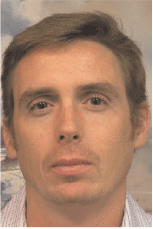Seismic modelling of fault zones
Emanuelle Frery A , Laurent Langhi A , Julian Strand B and Jeffrey Shragge CA CSIRO.
B CSIRO Energy.
C The University of Western Australia.
The APPEA Journal 56(2) 599-599 https://doi.org/10.1071/AJ15105
Published: 2016
Abstract
While faults have long been known as primary pathways for fluid migration in sedimentary basins, recent work highlights the importance of fault zone internal architecture, lateral variation, transmissivity, and impact on migration and trapping. The impacts of fault zone architecture and properties on seismic images are investigated to facilitate accurately mapped fault zones, and to predict subseismic flow properties and sealing potential.
A wedge-type fault model with a main fault and a synthetic fault displacing a typical North West Shelf siliciclastic succession is used to replicate the geometrical components of a seismic-scale fault. Elastic properties are derived from rock physics models, which are used in a 2D elastic modelling algorithm to produce realistic marine seismic acquisition geometry. These data were subsequently input into a 2D prestack (one-way wave-equation) migration code to produce an interpretable seismic image. Base-case elastic properties are systematically varied; modelling focuses on gouge properties, fractured fault zone material, the sandstone Vp/Vs relationship, and shale-sand velocity contrast. The workflow from geological model building to elastic property substitution and forward seismic modelling is extremely quick and versatile, allowing testing of a wide range of scenarios.
So far this approach has yielded valuable insights into internal fault property prediction and interpretation of the fault zone in traditional post-stack seismic datasets. Implications for processing workflow and attenuation of fault shadows are also expected.

Emanuelle Frery is a structural geologist, with experience in both geology and geophysics disciplines across the oil and gas industry and academia. Emanuelle has a particular expertise in the area of modern and paleo-fluid circulation along faults, from fieldwork to lab analyses and numerical modelling. Her PhD thesis focused on the study of fault transfer properties spatiotemporal evolution under the circulation of hydrocarbon, water, salt and CO2. She has been working with stable isotopes analysis, radiogenic dating, petrography, and structural geology, and in the industry on petroleum systems analysis at the basin scale. Emanuelle joined CSIRO in 2013 and is presently working as a geologist with CSIRO Earth Science and Resource Engineering on structural geology, geological modelling, trap integrity analysis, and basin modelling. |

Laurent Langhi is a Team Leader with CSIRO Earth Science and Resource Engineering, and has 10 years of experience in petroleum geology and exploration geophysics. After MSc and PhD in geology and geophysics awarded in his home country Switzerland, Laurent worked as a researcher at the University of Western Australia and as an exploration geologist/geophysicist in the oil and gas industry in Perth. In 2006 he joined CSIRO as a senior researcher focusing on trap integrity prediction, assessment/visualisation of fluids migration, and geological and geomechanical modelling. He also works in the fields of seismic attributes analysis and quantitative seismic for conventional hydrocarbon and carbon capture and storage. |

Julian Strand is a Senior Research Scientist at CSIRO Petroleum/Earth Science and Resource Engineering, primarily working on structural geology and issues related to incorporating structural geology into reservoir and basin models. He has been based in Perth since 2005, and is a member of the AAPG and EAGE. Julian was part of the Fault Analysis Group for nine years at the University of Liverpool and latterly UCD in Ireland. He attended the University of Liverpool and Imperial College, London. |

Jeffrey Shragge is presently the Woodside Professor in Computational Geoscience and is an Associate Professor jointly appointed in the School of Earth and Environment and School of Physics at the University of Western Australia. Jeffrey received a BScH (physics) from Queen’s, a MSc (geophysics) in earthquake seismology from the University of British Columbia, and a PhD (geophysics) in 3D seismic imaging from the Stanford Exploration Project at Stanford University. He presently serves as the Assistant Director of the UWA Centre for Energy Geoscience, a Co-Director of the UWA Reservoir Management Industry Research Consortium, an Assistant Editor of the journal Geophysics, and the Chair of the Committee of University and Student Programs (CUSP) for the Society of Exploration Geophysicists (SEG). In 2010, he was awarded the J. Clarence Karcher Award by the SEG, and was recognised with a best paper award at the 2012 ASEG Annual General Meeting. Jeffrey’s research interests include 3D/4D seismic imaging and velocity inversion, wave propagation, computational geometry, near-surface geophysics, and high-performance and general purpose GPU computing. |
References
Botter, C., Cardozo, N., Hardy, S., Lecomte, I., and Escalona, A. (2014). From mechanical modeling to seismic imaging of faults: a synthetic workflow to study the impact of faults on seismic. Marine and Petroleum Geology 57, 187–207.Castagna, J.P, Batzle, M.L., and Eastwood, R.L. (1985). Relationships between compressional-wave and shear-wave velocities in clastic silicate rocks. Geophysics 50, 571–81.
Childs, C., Manzocchi, T., Walsh, J.J, Bonson, C.G, Nicol, A., and Schöpfer, M.P. (2009). A geometric model of fault zone and fault rock thickness variations. Journal of Structural Geology 31, 117–27.
Dutzer, J.F., Basford, H. and Purves, S., 2010—Investigating fault-sealing potential through fault relative seismic volume analysis. Geological Society, London, Petroleum Geology Conference series 2010, volume 7, 509–15.
Faulkner, D.R, Jackson, C.A.L, Lunn, R.J, Schlische, R.W, Shipton, Z.K, Wibberley, C.A.J., and Withjack, M.O. (2010). A review of recent developments concerning the structure, mechanics and fluid flow properties of fault zones. Journal of Structural Geology 32, 1,557–75.
Faulkner, D.R., and Rutter, E.H. (2001). Can the maintenance of overpressured fluids in large strike-slip fault zones explain their apparent weakness? Geology 29, 503–6.
Han, D.H, Nur, A., and Morgan, D. (1986). Effects of porosity and clay content on wave velocities in sandstones. Geophysics 51, 2,093–107.
Weiss, R.M., and Shragge, J. (2013). Solving 3D anisotropic elastic wave equations on parallel GPU devices. Geophysics 78, F7–F15.


